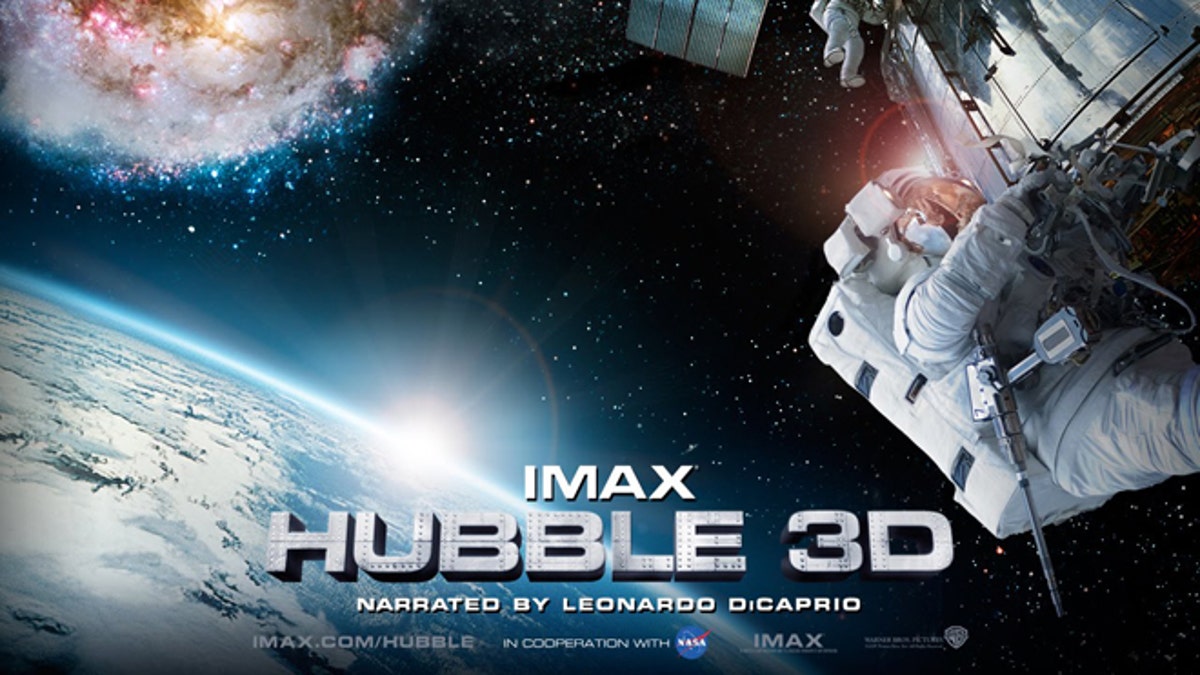
A movie poster for the Imax film "Hubble 3D." (Warner Bros)
The European Space Agency and NASA are looking to develop 3D cameras for use in space exploration.
In the past, many traditional, 2D cameras have been deployed for a range of applications from navigating planets and spacecraft safe landing to space station docking. But high quality they aren't: Those currently in use could be described as similar but superior in quality to those used in everyday cell phones.
A new study aims to identify alternative cameras -- hopefully higher quality -- and how to put them to best use.
Many space maneuvers require a 3D understanding of the area involved; to solve this current cameras are placed in “stereo configurations” -- arrangements involving complex math, not the shape of a stereo sound system. Very complicated computations then use these 2D cameras to figure out the third dimension.
3D cameras became available as of 2000. These cameras work by using “time of flight” measurements to create the third dimension, a measure of a coded light signal traveling between camera and object.
In 2010, the Russian spacecraft Soyuz 25S delivered a Fujifilm 3D camera to the International Space Station. Images taken with the camera are transmitted to the ground through the station's data communication system. In May 2011, astronauts used it to document life on board the spacebase in 3D.
The ESA's study is nearing completion; the results could pave the way for a new 3D camera designed specifically for use outside a space station. This cutting-edge camera would deploy on space rovers as well as spacecraft.
Beyond space exploration, the low-cost "flight of time" approach to 3D imaging could have far wider civilian applications -- including cool, next-generation cameras for civilians.
The study is being undertaken by Thales Alenia Space, SINTEF and Terma.
